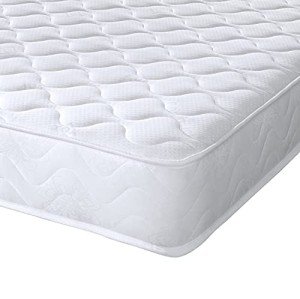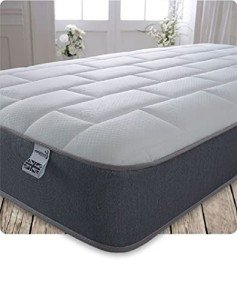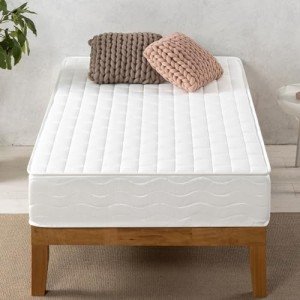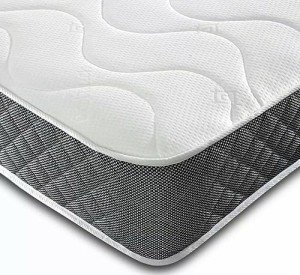A Comprehensive Guide to Single Hybrid Spring and Memory Foam Mattresses
When it comes to choosing the right mattress, the options can be overwhelming. A burgeoning favorite in recent years is the single hybrid spring and memory foam mattress. This guide seeks to shed light on what this type of mattress is, its benefits, how it compares to traditional options, and answers to frequently asked questions.
Understanding the Hybrid Mattress
Hybrid mattresses combine the best features of innerspring and memory foam mattresses. Specifically, they usually consist of a support core made of individually wrapped coils—sometimes referred to as springs—layered with a comfort layer made of memory foam or latex. This dual construction aims to provide the support of a traditional mattress along with the comfort and contouring of memory foam. A single hybrid mattress is designed specifically for one sleeper, typically accommodating standard single bed sizes.
Key Components of a Single Hybrid Spring and Memory Foam Mattress
| Component | Description |
|---|---|
| Support Core | Made of steel coils that provide essential support, reduce motion transfer, and promote airflow. |
| Comfort Layer | Memory foam or latex that conforms to the body, relieving pressure points and enhancing comfort. |
| Cover Material | Typically made from breathable fabrics, the cover helps regulate temperature and provides a soft feel. |
Benefits of Using a Single Hybrid Spring and Memory Foam Mattress
1. Support and Comfort
One of the most significant benefits of a hybrid mattress is the balance of support and comfort. The spring layer offers firm support that can cater to individuals who require additional back support. Memory foam, on the other hand, molds to the body’s contours, alleviating pressure points.
2. Temperature Regulation
Unlike traditional memory foam mattresses, which are known for retaining heat, hybrid configurations often include a top layer made from breathable materials that improve airflow. This feature allows for better temperature regulation, making the mattress suitable for various climates.
3. Motion Isolation
For couples or those who share a bed with pets, motion isolation becomes a key consideration. The individual coils in a hybrid mattress reduce the transfer of motion, meaning that if one person moves, the other is less likely to feel it.
4. Durability
Because they combine different materials, hybrid mattresses tend to be more durable than traditional all-foam beds. The coils provide a robust foundation while the memory foam layer allows for longevity with its resilience against sagging.
5. Variety of Options
Hybrids come in various firmness levels and materials, allowing users to find a mattress that suits their personalized comfort preference. This availability enhances customer satisfaction while meeting particular sleep needs.
Considerations Before Purchasing a Single Hybrid Mattress
When deciding on a single hybrid mattress, potential buyers should consider the following:
- Budget: Prices can vary significantly depending on brand and materials used.
- Firmness Level: Consider the firmness level that works best for your sleeping style—soft for side sleepers and firmer for back or stomach sleepers.
- Warranty and Trial Period: Many brands offer trial periods and warranties. These can provide valuable assurance when investing in a new mattress.
Pros and Cons Table
| Pros | Cons |
|---|---|
| Combines support and comfort | Can be more expensive than traditional mattresses |
| Good for temperature regulation | Weight can make moving cumbersome |
| Reduced motion transfer | The initial smell from foam materials (off-gassing) |
| Customizable options available | Hybrid may not suit everyone; personal preference determines satisfaction |
Frequently Asked Questions (FAQs)
1. How long does a single hybrid mattress last?
Typically, a hybrid mattress will last around 7 to 10 years, depending on the materials used and how well the mattress is maintained.
2. Are hybrid mattresses heavy?
Yes, hybrid mattresses can be heavier than traditional mattresses due to the springs and multiple layers involved. It is advisable to buy a hybrid mattress with the help of multiple people or ensure it’s delivered.
3. Can hybrid mattresses be flipped?
Most hybrid mattresses are designed with a specific top and bottom layer, meaning they should not be flipped. Rotation, however, is recommended to ensure even wear.
4. Do I need a special bed frame for hybrid mattresses?
A sturdy bed frame or foundation is typically recommended to support the weight and provide longevity for a hybrid mattress.
5. Are single hybrid mattresses suitable for all sleep positions?
Yes, hybrid mattresses are versatile and can accommodate all sleep positions (back, side, stomach) by offering balanced support and comfort.
A single hybrid spring and memory foam mattress is an excellent choice for those looking for the perfect balance between support and comfort. The unique construction allows for good airflow, durability, and motion isolation—making it a suitable option for various sleep preferences. By understanding the components and benefits of a hybrid mattress, consumers can make informed decisions and enjoy restful sleep for years to come.
In today's crowded mattress market, the hybrid mattress emerges as a popular solution for many, combining the best aspects of traditional innerspring and modern foam technology.






